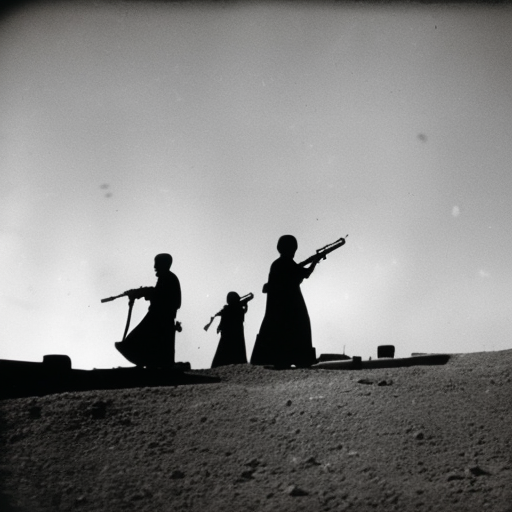The Iraqi Civil Wars
The Iraqi Civil Wars refer to a series of conflicts that have taken place in Iraq since the country’s formation in the early 20th century. These wars have been characterized by political, ethnic, and sectarian divisions, as well as external interventions. The most significant civil wars in Iraq’s history include the Kurdish uprising in the 1960s, the Iran-Iraq War in the 1980s, the Gulf War in 1990-1991, and the sectarian violence that followed the 2003 US-led invasion.
Kurdish Uprising (1961-1970)
The Kurdish uprising in Iraq began in 1961 when the Kurdistan Democratic Party (KDP) launched an armed rebellion against the central government in Baghdad. The Kurds, who are an ethnic minority in Iraq, sought greater autonomy and recognition of their cultural and political rights. The conflict intensified in the late 1960s, leading to a full-scale civil war. The Iraqi government, under President Saddam Hussein, responded with a brutal military campaign, including the use of chemical weapons. The conflict ended in 1970 with a ceasefire agreement that granted limited autonomy to the Kurdish region.
Iran-Iraq War (1980-1988)
The Iran-Iraq War was a devastating conflict that erupted in 1980 when Iraq, under Saddam Hussein’s leadership, invaded Iran. The war was fueled by territorial disputes, religious differences, and a desire for regional dominance. It resulted in heavy casualties and economic damage for both countries. The conflict saw the use of chemical weapons, ballistic missiles, and trench warfare. Despite several attempts at peace negotiations, the war continued for eight years until a ceasefire was finally reached in 1988. The war left both countries economically weakened and socially scarred.
Gulf War (1990-1991)
The Gulf War, also known as the First Gulf War, was a conflict that began in 1990 when Iraq, under Saddam Hussein, invaded Kuwait. The invasion was motivated by territorial claims and economic disputes. The international community, led by the United States, formed a coalition to liberate Kuwait and protect other Gulf countries from Iraqi aggression. The war lasted for a relatively short period, with the coalition forces quickly overpowering the Iraqi military. A ceasefire was declared in 1991, and Iraq was subjected to economic sanctions and disarmament measures.
Sectarian Violence (2003-2011)
The sectarian violence in Iraq refers to the period of intense conflict that followed the 2003 US-led invasion of Iraq. The invasion aimed to remove Saddam Hussein’s regime and establish a democratic government. However, the power vacuum created by the removal of Saddam Hussein led to a surge in sectarian tensions between Iraq’s Sunni and Shia populations. The country descended into a cycle of violence, with frequent bombings, assassinations, and targeted attacks. The conflict was exacerbated by the rise of extremist groups, such as Al-Qaeda in Iraq and later the Islamic State (ISIS). The violence gradually subsided after the US troop surge in 2007 and the implementation of a counterinsurgency strategy. However, the effects of the sectarian violence continue to be felt in Iraq to this day.
In conclusion, the Iraqi Civil Wars have been marked by a series of conflicts and divisions that have shaped the country’s history. From the Kurdish uprising to the Iran-Iraq War, the Gulf War, and the sectarian violence following the 2003 invasion, these conflicts have had a profound impact on Iraq and its people. The legacy of these wars continues to influence the political, social, and economic dynamics of the country.












